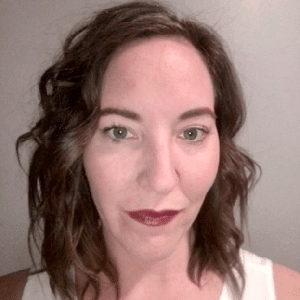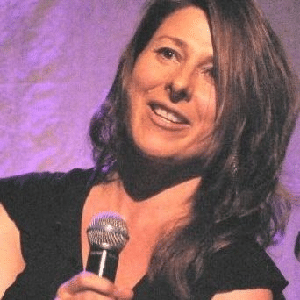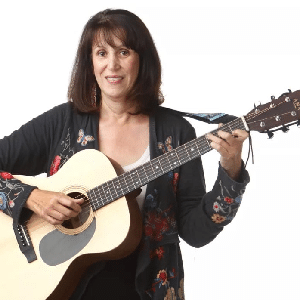Music for All: Fostering Inclusion in the Arts Through Adapted Professional Development
In this case study, we explore how one middle school brought together music teachers and special education professionals to ensure full access and inclusion of all students within the arts.
Meeting diverse learning needs
Creative, Performing and Media Arts (CPMA) Middle School is an arts-focused magnet school in the San Diego Unified School District. CPMA believes that the arts provide opportunities for students to feel they belong, to grow and to express themselves, and to practice compassion and learn from one another. CPMA is a unique school in that it serves students from across the San Diego Unified School District. Within that population, CPMA has a large number of special education students with diverse learning needs.
Christine Rudy-Reed, who is responsible for coordinating professional learning and curriculum development for CPMA through the Magnet Schools Assistance Program (MSAP) grant Amplifying the Arts in the San Diego Unified School District, was looking for a way to grow and adapt the school’s existing arts programs to include new arts partners in order to increase arts equity, access, and opportunity for all learners.
To support this goal, Christine recognized the need for music educators, music integration specialists, and special education professionals to come together and share their knowledge. Thus, adapted professional development (PD) was born.
Setting the stage for collaboration
Adapted PD is a collaborative and interdisciplinary approach to educator learning aimed at meeting the diverse learning needs of students, particularly those whose disabilities have traditionally presented barriers to inclusion in arts education in the past. It involves connecting educators from different disciplines, providing training on adaptive techniques and tools, and developing shared strategies to ensure full access to arts education for students with specialized learning needs.
CPMA is committed to cultivating a welcoming, safe, collaborative culture for all, and CPMA’s MSAP grant goals are focused on developing interdisciplinary, arts-integrated and inclusive learning experiences for all students. Thus, developing a professional learning experience that brings together educators from various backgrounds, disciplines, and expertise to grow together cross-departmentally, engaging educators in deep collaborative and active learning, and providing time together for co-planning, is critical to aligning the school’s mission while advancing arts education for all educators and their students.
The first challenge of implementing adapted PD at CPMA was simply coordinating schedules so that teachers could have time to collaborate. Teachers were given a sub and released from their classroom for a one-day workshop. Related service providers like paraprofessionals and occupational, speech, and physical therapists were also included in the training.
For the first time, music educators and special education professionals had an opportunity to be together in the same space and build connections.
Bridging music and special education
In the morning, teachers focused on developing a mutual understanding of one another’s disciplines and teaching practices, and on defining shared student learning objectives for the adapted music program. CPMA also brought in Guitars and Ukes in the Classroom (GITC), a nonprofit organization that trains and equips teachers to adapt and integrate music into the classroom experience. The full team worked together to delve into the underlying questions and possibilities of collaboratively creating an inclusive music program.
“Our ed specialists have such deep knowledge of each of their individual students’ strengths, needs, and the accommodations and modifications that work well for them. Our music teachers have such strong expertise in their craft. We gave them that time to connect and learn from one another,” says Christine.
Then in the afternoon, they participated in hands-on training with GITC to develop the capacity to adapt and lead music for inclusion of students with specific abilities and challenges.
According to GITC’s founder and executive director, Jessica Baron, one of the biggest challenges is getting non-music educators comfortable with music.
“When a program like this is put in place, there will be teachers who are early adopters, and they will embrace it fully. Others may be more hesitant because making music is not yet in their comfort zone. The path to helping them develop musical skills and comfort level is providing free, ongoing training for those who wish to try.”
To overcome these obstacles, teachers and support staff were given time to play instruments, including percussion, ukuleles, and kazoos, while learning different adaptive strategies. GITC also provides ongoing free virtual and in-person training PD workshops and courses for interested educators and support staff.
After the workshop was over, GITC’s teaching artist Sharon DuBois went into a variety of classrooms serving Special Education students for 8-13 weeks to facilitate instruction in adapted music and music integration, and to provide ongoing support.
“It takes time to build trust with not only the students, but also with the instructors and aides as well,” Sharon explains.
Harmonizing inclusion
Thanks to adapted PD and the partnership with Guitars in the Classroom, CPMA has built a collaborative, inclusive environment for both students and staff. Educators have grown in their own practice and now have the confidence to lead even in Sharon’s absence.
A major win was seeing teachers and support staff utilizing strategies like visual schedules, kinesthetic and tactile cueing, and hand-over-hand support.
“When we went into classrooms [before the adapted PD], some of the parapros were standing back. They wanted to help, but the instruments were foreign objects,” recalls Jessica. “Now, they are taking it upon themselves to successfully engage the students in playing the instruments with a combination of strategies.”
Sharon and Jessica also guided CPMA on the best way to spend their grant funds to purchase adapted music equipment like Makala Waterman ukuleles made of an indestructible and easily sanitized colorful polymer, non-slip mats to keep instruments in place for wheelchair users, adaptive finger picks for students who struggle with grip, different types of mallets and drumsticks, and a variety of repertoire choices that cater to students’ strengths and needs.
This has not only improved access to music education, but also increased integration of music into the special education classrooms. Students now use music for self-soothing, classroom transitions, and even ask for instruments during choice time.
The end result? Authentic, dignified participation in music instruction for all.
“I was just in one of our adapted music classrooms the other day and saw 100% of students engaging in their own way,” says Christine. “They’re not all using the same instruments at the same time or in the same way, but they’re all making music while making progress toward learning goals, and they’re all contributing meaningfully to the classroom environment.”
Reflections
Big takeaway
Christine emphasizes the importance of ensuring that teachers and service providers continue to foster inclusive environments even when external support is not present. “Our goal was to create inclusive opportunities and access to the arts for all in a way that’s sustainable. So what happens in the classroom after the teaching artist is no longer there? Making sure our PD is responsive and relevant to the needs of the staff so that they feel confident in their ability to lead or facilitate instruction is key.”
What I would tell other educators/leaders
Everyone who works with a child matters and needs to be included in training, says Jessica, “Para-pros and classified staff sometimes get ‘othered’. They don’t get trained. But if we give our para-pros and support staff the training they deserve, they can be making music much more accessible for kids who need extra support.”
What we are still figuring out
To keep this work going, Christine knows that they must continue to prioritize collaborative learning opportunities. “One thing we’re working on now is continuing to make time in our schedules for teachers to meet, to visit one another’s classrooms, and to learn from each other in a supportive and non-threatening way. We are also planning to continue this collaboration over the summer, so that teachers can work together to define student learning outcomes and identify what those supports might look like along the way.”
About The Author
Christine Rudy-Reed (MA) is an educator, dance artist, and advocate dedicated to equity and inclusion in arts education. With over 14 years of experience in education, Christine currently serves students and educators at the Creative, Performing & Media Arts (CPMA) Magnet Middle School in the San Diego Unified School District. As a Magnet Schools Assistance Program (MSAP) Resource Teacher at CPMA, Christine guides implementation of the MSAP grant program at the school site, including educator professional learning; interdisciplinary, arts integrated curriculum development; and community, partner and family engagement.

Sharon DuBois is a musician, composer, performing and recording artist who brings her skills into the classroom to share with students. She has been working as an arts integration teacher since 2011 and received The Young Audiences teaching credential in 2020. Sharon has been immersed in exceptional student classrooms since 2022. Ms. DuBois includes DEIA and SEL practices in all of her activities and classes where she uses music to reach her students. Together they explore instruments, musical styles and genrés to see what resonates. In doing so she is able to stimulate the student’s mind and thereby help the student to create and communicate at a deeper level.

Jess Baron is life-long musician and educator whose passion for bringing music, authenticity, and creativity to teaching and learning has led her through advanced studies, degrees and work in behavioral disabilities, child development and clinical psychology, human development education, and educational therapy, plus over forty years of experience teaching music to beginners of all ages. Her pioneering work in the fields of Music Integration and Adaptive Music has created access to making music for hundreds of thousands of students by training educators new ways to teach multiple subjects more responsively through the inclusion of music and the power of song. She founded Guitars & Ukes in the Classroom in 2000, and continues to serve as Executive Director while keeping her hand in teaching professional development courses and workshops, presenting at conferences, and supervising teaching artist residencies in general and special education classrooms.

School Background
The Creative, Performing and Media Arts (CPMA) Magnet Middle School is a public magnet school in the San Diego Unified School District. CPMA provides a challenging, standards-based instructional program, coupled with specialized training in the creative, performing, and media arts. The integrated curriculum approach allows students to develop skills, meet rigorous academic standards, and be exposed to various visual, performing, and media/technical art opportunities and related career options.